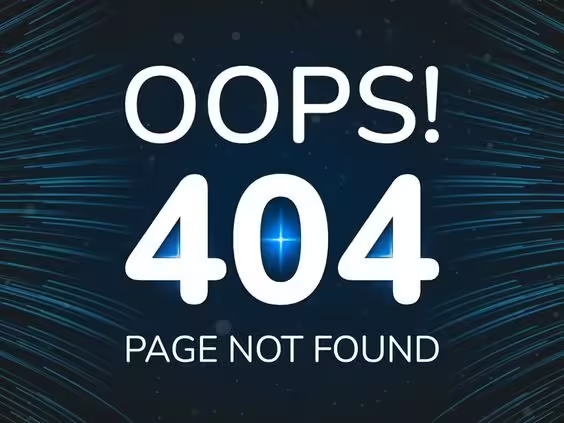Have you ever encountered the dreaded error message “could not find the specified shortcut” while working with your applications? If so, you’re not alone. This issue often stems from a specific category of errors known as NSCocoaErrorDomain—an area that can frustrate even seasoned developers. Understanding this errordomain=nscocoaerrordomain&errormessage=could not find the specified shortcut.&errorcode=4 and its nuances is crucial for anyone looking to troubleshoot effectively.
In this article, we will dive deep into NSCocoaErrorDomain and explore common causes behind these errors. By equipping yourself with troubleshooting steps and best practices, you’ll be better prepared to tackle issues like error code 4 head-on. Whether you’re a developer or just curious about how it all works, there’s valuable information ahead that can save you time and headaches in your coding journey!
Understanding NSCocoaErrorDomain and its Error Codes
NSCocoaErrorDomain is a crucial component in the Cocoa framework, serving as an umbrella for various error codes.
Each error code within this domain represents specific issues. For example, error code 4 indicates that a specified shortcut could not be found. Understanding these codes enables you to pinpoint the root cause of problems more effectively.
This errordomain encompasses numerous categories related to file handling, data manipulation, and user interface interactions. Knowing which category your issue falls under can significantly streamline troubleshooting efforts.
Developers often rely on NSCocoaErrorDomain when debugging their applications. By familiarizing yourself with its structure and meaning, you’ll gain valuable insights into resolving potential pitfalls in your coding projects.
Common Causes of NSCocoaErrorDomain Errors

NSCocoaErrorDomain errors often stem from issues in the app’s interaction with file systems or data management. One common cause is attempting to access files that don’t exist, leading to error code 4: “could not find the specified shortcut.” This typically happens when a referenced file has been moved or deleted.
Another frequent culprit is permission-related problems. If your application lacks the necessary permissions to read or write a particular resource, it can trigger these errors.
Network connectivity issues also play a role. When trying to fetch remote resources without an active internet connection, you may encounter NSCocoaErrorDomain messages.
Bugs within your code can lead to miscommunication between different components of your app. Always check for logical flaws and ensure all paths are correctly defined before execution.
Troubleshooting Steps to Fix NSCocoaErrorDomain Errors
When you encounter an NSCocoaErrorDomain error, it can be frustrating. The first step is to identify the specific error code linked to your issue. For example, if you see “errordomain=nscocoaerrordomain&errorcode=4,” it indicates that a specified shortcut could not be found.Next, check your file paths and resource locations. Ensure that everything is correctly referenced within your application. A simple misdirection in these paths often leads to errors like this.
If the problem persists, consider cleaning and rebuilding your project. Sometimes cached data can cause conflicts that result in various Cocoa errors.
Also, reviewing any recent changes made before the error appeared might reveal clues as well. It’s essential to keep track of modifications because they may provide insight into what went wrong during development or updates.
How to Check for NSCocoaErrorDomain Errors in Your Code
To check for NSCocoaErrorDomain errors in your code, start by implementing error handling with the NSError object. This allows you to capture and analyze specific error codes.
When an error occurs, it will be caught, allowing you to inspect its properties.
Next, evaluate the NSError object’s domain and code. For example, if you encounter `errordomain=nscocoaerrordomain&errorcode=4`, this indicates that a specified shortcut could not be found.
Consider logging these errors for better tracking over time. This practice helps identify recurring issues in your application.
Keep your user informed; provide clear messages based on the specific NSCocoaErrorDomain encountered. Clear communication can significantly enhance user experience during unexpected situations.
Best Practices for Handling NSCocoaErrorDomain Errors
When dealing with NSCocoaErrorDomain errors, proactive handling is key. Always anticipate potential errors in your code. This way, you can create a smoother user experience.
Implement structured error handling using try-catch blocks. This allows you to catch errors gracefully and respond without crashing the application.
Logging is essential for tracking issues. Use logging frameworks to capture details about the error context when they occur. It helps in diagnosing problems later on.
Instead of technical jargon, use simple language that explains what went wrong and suggest possible next steps.
Testing your code thoroughly is non-negotiable. Utilize unit tests that specifically check how your app responds under various conditions leading to NSCocoaErrorDomain errors.
Always keep your dependencies updated. Sometimes these errors stem from outdated libraries or SDKs; staying current can mitigate many common pitfalls related to errordomain complications.
Resources for Further Assistance with NSCocoaErrorDomain Errors

When dealing with NSCocoaErrorDomain errors, having the right resources can make all the difference.
Apple’s official documentation is a great starting point. It provides detailed explanations of error codes and their meanings. This resource helps you understand what each error signifies in your projects.
Developer forums are another valuable asset. Sites like Stack Overflow offer community-driven support where experienced developers share solutions to similar issues. Engaging with others facing the same challenges can lead to quick fixes.
Online courses and tutorials also focus on Cocoa programming best practices. Platforms like Udemy or Coursera often have specific modules addressing common errors, including those linked to NSCocoaErrorDomain.
You might also find GitHub repositories useful for hands-on examples of how others have solved these problems in their codebases. Exploring real-world applications can provide insights into effective troubleshooting techniques that you might not encounter elsewhere.
Conclusion
Understanding NSCocoaErrorDomain and its Error Codes
When working with macOS or iOS applications, developers often encounter various error domains. One such domain is the NSCocoaErrorDomain. This error domain encompasses a range of errors related to Cocoa frameworks, which are foundational for app development on Apple platforms. Each error within this domain has a unique code that helps identify specific issues.
One common error you may run into is “errordomain=nscocoaerrordomain&errormessage=could not find the specified shortcut.&errorcode=4.” This particular message indicates that your application attempted to locate a shortcut but failed to do so, resulting in an inability to proceed with certain actions.
Common Causes of NSCocoaErrorDomain Errors
Errors under the NSCocoaErrorDomain can arise from multiple sources. Missing resources are among the most frequent culprits; if your app references files or shortcuts that no longer exist or have been moved, you’ll likely see this type of error. Another possibility is incorrect configurations within your project settings; mismatched paths or identifiers can lead to frustrating roadblocks during runtime.
Additionally, permissions issues might cause these errors as well. If your app lacks adequate access rights to necessary files or directories, it could trigger an exception leading back to NSCocoaErrorDomain.
Troubleshooting Steps to Fix NSCocoaErrorDomain Errors.
To resolve these errors effectively, begin by double-checking all resource links within your project. Ensure that any referenced shortcuts exist at their specified locations and haven’t been deleted or moved unintentionally.
Next, review your project’s configuration settings thoroughly. Look for discrepancies in file paths and ensure they align with where resources reside in the directory structure.
If you’re still encountering issues after verifying these elements, consider checking user permissions related to folder access as well as reviewing console logs for additional contextual information regarding what might be going wrong during execution.
How to Check for NSCocoaErrorDomain Errors in Your Code.Detecting these types of errors requires diligent coding practices alongside


